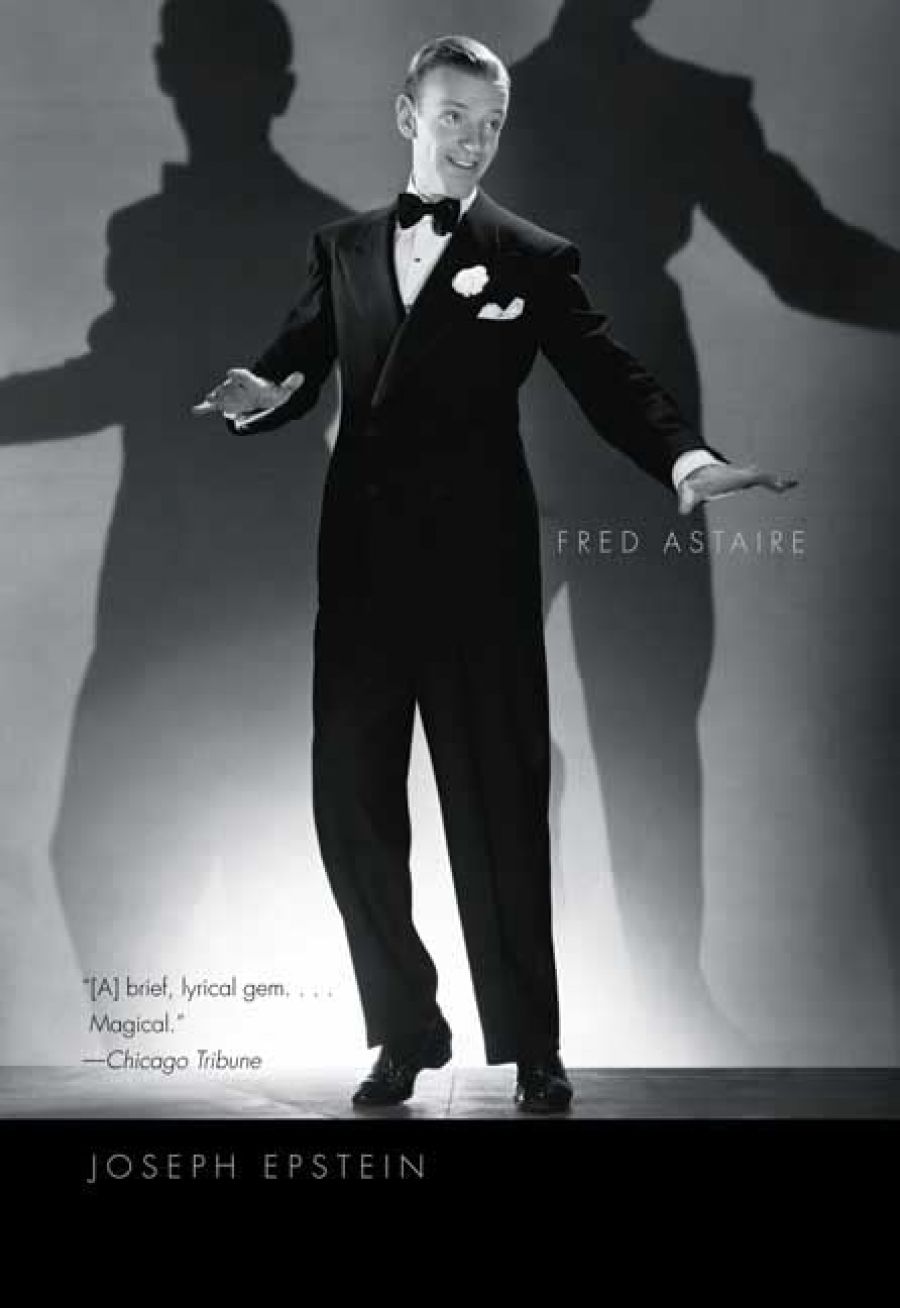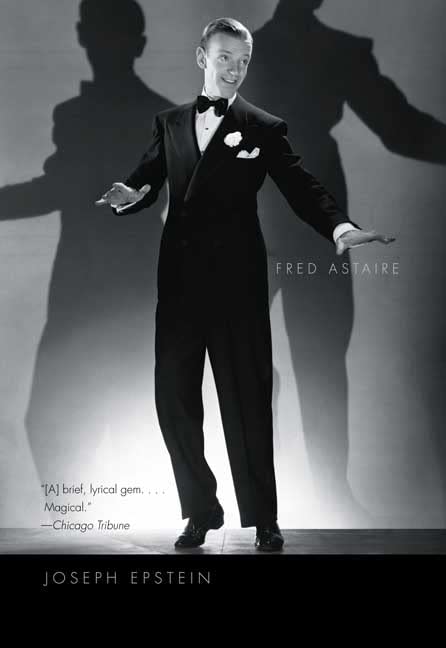
- Free Article: No
- Contents Category: Biography
- Review Article: Yes
- Article Title: The Battle of Austerlitz
- Online Only: No
- Custom Highlight Text:
One morning in late June 2008 I was seated at the breakfast table in Oriel College, Oxford, with a small group of delegates at a conference devoted to Frederick Austerlitz, when a man approached, with a bulging briefcase slung from his shoulder, and asked if he might sit down. It emerged that he had walked from Oxford Railway Station (no mean trek) in order to get to the college in time for the conference’s first session, which he was hoping to attend. Directed to one of the conference organisers, he repeated his tale, was informed he’d be welcome, and was then asked his name. ‘Carmichael,’ he said casually. ‘Hoagy Carmichael ... Junior.’
- Book 1 Title: Fred Astaire
- Book 1 Biblio: Yale University Press (Inbooks), $34.95 hb, 213 pp
- Book 1 Cover Small (400 x 600):

- Book 1 Cover (800 x 1200):

The old adage ‘Never judge a book by its cover’ might have been coined with this slim volume in mind. For all of what the actor/pianist/wit/raconteur Oscar Levant referred to as Astaire’s ‘unstressed [in both senses of the word] elegance’ is captured in the wonderful black-and-white image of the jacket portrait. Hardly anything of Astaire’s distinctive style, with its combination of throwaway ease and fluent precision, is caught in Epstein’s awkward prose, by turns arch and plodding.
Admittedly (given that it would be hard to write a book on Astaire without some of the subject’s class and charm rubbing off on an author), there are the odd passages where Epstein, usually helped by the insights of previous writers, succeeds in doing intermittent justice to his subject. But surely the editor of this ‘Icons of America’ series could have cast his net a little wider and found someone capable of doing more than a conventional scissors-and-paste job on this particular ‘icon’, especially since Epstein himself feels the need to devote a page to a ponderous paraphrase and questioning of the term itself. Rather than ending his book on this parading of part querulous, part bland pontifications, he might usefully have devoted some space to telling us specifically why he considers the term ‘genius’ inappropriate for Astaire, when so many rather better qualified judges – Balanchine, Robbins and Baryshnikov for starters – do not consider it out of place.
But then Epstein has Schopenhauer (one assumes this is James Schopenhauer, that lesser known dance critic, rather than the better known – though not for his Terpsichorean insights – philosopher) to support him in his distinction between talent and genius, thereby allowing him to inform the reader that, while not a genius, ‘An American artist Fred Astaire indubitably was’ – an insight as instructive in its way as his comment that ‘Cary Grant ... despite his immitigably English accent, often played Americans’.
In what is essentially just an extended essay, recycling received wisdom on Astaire’s approach to dancing and singing, such observations can – just – past muster. The same cannot be said for Epstein’s style, with its melange of arch asides : ‘the Austerlitzes ... had a son, Frederick, Freddie, Fred (hold the Fritz), the subject of the slender disquisition now in your hands’; the ingratiating parading of a little learning: ‘In pursuing Ginger Rogers ... Astaire may have been going a bit downmarket, in the way Charles Swann goes after Odette de Crecy, the cocotte of Marcel Proust’s great novel’; and the grating insertion of inappropriate bons mots: ‘In speech and song ... Betty Hutton did only fortissimo, molto rumore – strong, with lots of noise’ (and thanks for clearing that up); or: ‘[Astaire] was the masculine equivalent of what the French call a belle laide’ (actually, the term is usually jolie laide, and any connection between it and Astaire has to surmount the problem of gender first, and inapplicability second); and gauche quips: ‘Barrie Chase [Astaire’s final dance partner] ... [had] what used to be called a fine figure (now known as a great bod).’
One cannot but set these and many, many others alongside such howlers as ‘Charm is the young Truman Capote’ – arguable, anyway – ‘not the older Richard Wagner’ (perhaps he means Robert?); or ‘Fred Astaire was this little guy, skinny, with big ears ... And yet root for him we do. We do so because he is always coming from behind’; or, after quoting the far more perceptive John Mueller’s critical commentary on a duet from The Band Wagon, whose flaws ‘suggest that Astaire had little to do with its choreography’, Epstein helpfully comments that it ‘was in fact done by a man named Michael Kidd’. (Query to author: Would this be the same Michael Kidd who, over eighty years, also ‘did choreography’ for shows like Guys and Dolls, The Music Man, Hello, Dolly! and dozens of others?)
Inevitably, given Astaire’s range of achievements, Epstein cannot avoid coming up with comments on aspects of his art which are judicious and to the point. He is good on Astaire as singer, making smart use of comments from Berlin and Wilfred Sheed in his analysis of Astaire’s approach to rhythm and emphasis on the lyric, and he is spot on with his observations on the Verve recordings, made with a dream team of jazz musicians, among them Oscar Peterson and Barney Kessel. But to compare Astaire’s singing with the parlando (his word) of Rex Harrison and Richard Burton, and to assert that his full vocal range was ‘only an octave’, can be easily disproved by simply listening to his sublime interpretation of a song Epstein refers to but clearly hasn’t heard – Cole Porter’s ‘I Concentrate on You’ (a range of one and half octaves, with an awkward, high-lying tessitura).
He is also only too quick to dismiss earlier, rather more perceptive critics, among them Graham Greene, whose review of Top Hat he labels ‘misbegotten’. If anything is misbegotten, it is Epstein’s wilful inability to grasp the deftness of Greene’s comparing Astaire to Mickey Mouse. Far from Greene’s suggesting that Astaire is ‘cartoonish’, what he actually writes is worth taking more seriously than anything Epstein offers: ‘Top Hat is a vehicle ... for Mr Astaire’s genius ... He belongs to a fantasy world almost as free as Mickey’s from the law of gravity, but unfortunately he has to act with human beings, and not even Miss Ginger Rogers can match his freedom, lightness and happiness.’
Buy the DVDs and watch them to catch these qualities, rather than trying to find them in Epstein’s pages.


Comments powered by CComment